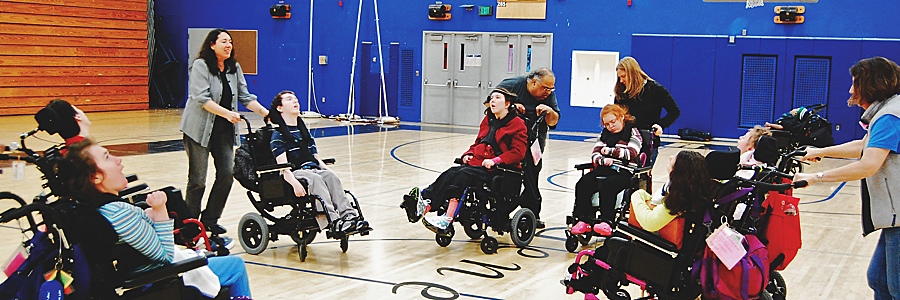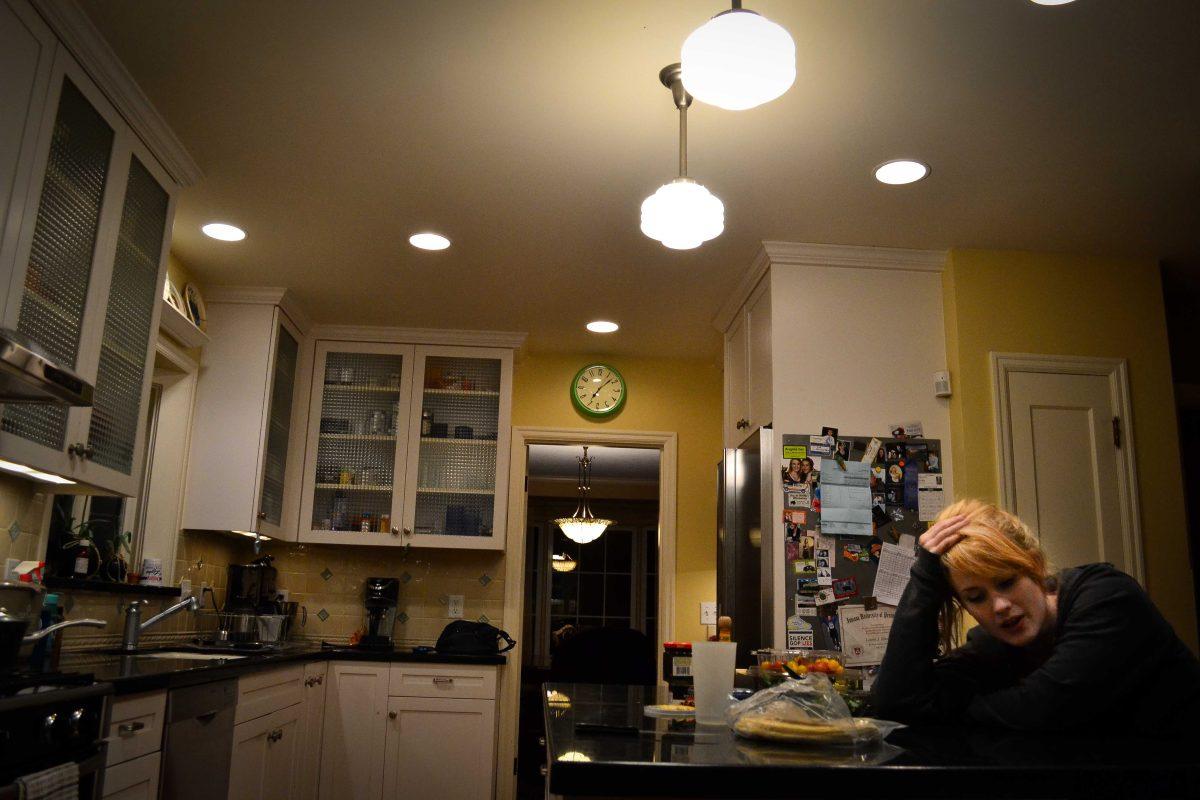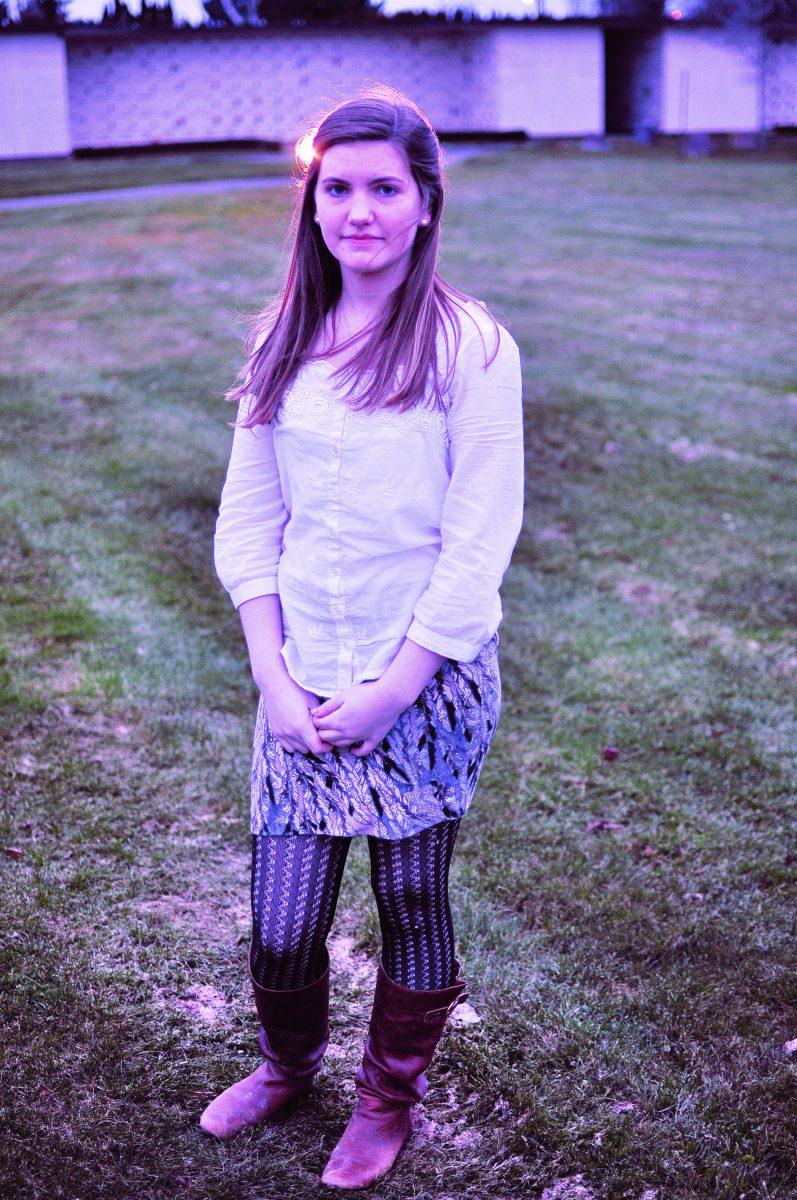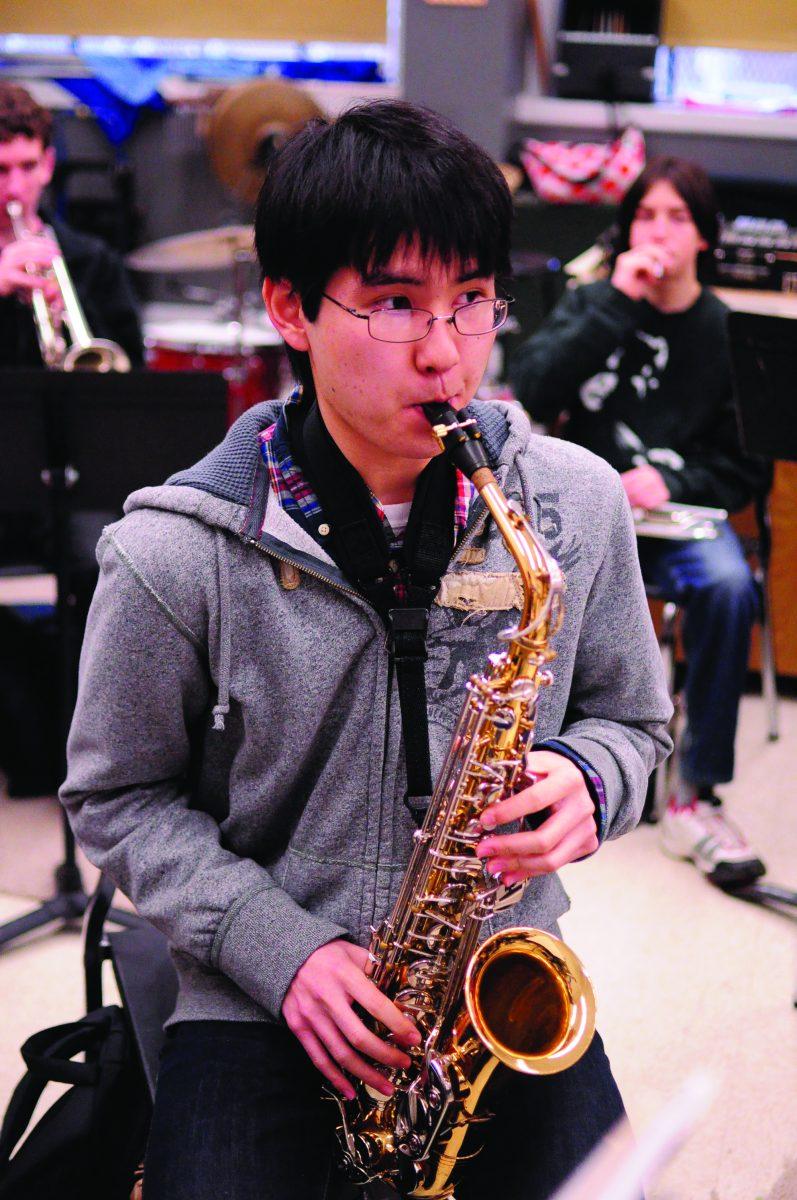Cindy Zyrini, the classroom teacher for Grant’s medically fragile students, pushes a glowing ball through dangling strips of shiny purple material. Her student, a girl, stares at the ball as it moves back and forth. Zyrini slowly puts the toy down. “Do you want more? Blink for yes,” she asks.
The girl stares, maintaining eye contact, but does not respond immediately. The message has not yet reached her brain. About 20 seconds later, she responds with a strong blink.
She is one of the 11 students who can be seen in the line of wheelchairs being pushed down the hallways of Grant. They live at the Providence Center for Medically Fragile Children where they can have their medical needs looked after 24 hours a day. Grant is one of two schools in the Portland district that has such a class on campus.
The medically fragile students come from across the state and their disadvantages vary. None can articulate words, many have poor eyesight and some are blind. Some have a stronger ability to move their fingers, while others’ hands are clenched into fists. Most of the students are fed through a tube.
Zyrini works with four paraeducators who specialize in making sure the students can thrive. The purpose of every activity is to encourage them to communicate whether they like something or not, and to help them make choices.
The teaching team uses switches – large buttons that can be programmed to have many different effects. In one activity, the students are placed in front of a computer screen that plays a slideshow of images, like a music video. The students are given a switch and are prompted to push it to begin the video and again to restart it when it pauses.
Junior Elisa Boggs visits the class to help out during first and fourth periods. “I just do whatever is needed,” she says, noting that reading to students or participating in wheelchair line-dancing are two popular choices. “Being part of what makes them happy is amazing. They are really great kids.”
The reading and music help, when repeated, to stimulate the students’ communication skills, Zyrini says. But the budget cuts faced by schools hits this classroom just like any other. Last year, there were four paraeducators and eight students. One position was cut at the beginning of the year and three students were added to the class. Zyrini fought and was able to gain the paraeducator back, but  there are still limits.
there are still limits.
Without more help, the class is restricted from going upstairs for music or downstairs for art classes. Staff members haven’t let this hold them back, asking students to play music for the kids in the classroom and coming up with ways to bring art to them.
Dianne Copper began volunteering in Grant’s special education department, in part, because of her experience dealing with her son’s dyslexia. This year, she began volunteering in the medically fragile class and she bonded with the students and staff.
Grant students don’t really know much about the class other than what they seen when the students are wheeled in and out of the building. Sometimes students feel uncomfortable around the class.
Paraeducator Bonnie Cummings describes that as natural teen-age behavior. Sometimes, it can be frustrating. “We’ll be pushing them through the halls and someone will cut right in front of the wheelchair,” Cummings says. “And the looks these students get. I’m just like, ‘They can see you!’”
Cummings, however, understands the aprehension.
In fact, it was during one such trip that Cummings encouraged Boggs to become a teacher’s assistant for the class. “I was walking with Bonnie when she was bringing in one of the kids, and there were just so many looks – like, really?” Boggs recalls. “You can’t just take five minutes out of your day to be nice to them? Not a lot of people want to take the time to realize that.”
Each student has a strong personality. There’s the “wild child,” with very strong hands and eyesight, who will rock out on the keyboard until she is forced to stop. One student is a drum-line boy. Every time he hears Grant’s marching band play, he lights up and smiles. Another is so enamored with singing that whenever she hears the school’s choir perform, she launches into her own impromptu solo.
As lively as this classroom is, it’s often forgotten about. “It’s an overlooked program, but it’s federally mandated,” says Copper. Federal law stipulates that disabled students must have access to the “least-restrictive” learning environment possible.
Zyrini and her crew want to see more involvement from the school with her class. She invites all students to stop by and volunteer or check out the Friends First Club on Wednesdays in Room 141 where students can interact, play games and learn about one another.
Paraeduator
Cummings’ connection with Grant runs deep. All three of her children are graduates. She started at Grant in 1999 as a volunteer and then worked as a paraeducator for special needs students. When the medically fragile class was introduced at Grant last year, she jumped at the chance to join. “It’s fun seeing their changes,” Cummings says. “It’s everything. It’s art, it’s music and it’s exciting to see how they grow and learn.”
Cummings also helps direct the weekly “Friends First” meetings, where students can volunteer to come in and help out. “It helps our students, who don’t get out into the general mainstream classrooms, meet people,” she says. “It also helps people who might not know about this class. I think it helps all of us.”
Head teacher
Zyrini took over the medically fragile class halfway through the past year. Previously, she had been a teacher at the resource center at Benson High School but she transferred because she had more experience with students with advanced medical needs. Zyrini is the balancing force within the classroom: each morning, she organizes the schedule that stipulates which activities each student will be participating in at any given time. She also tracks medical needs: medication, feeding and other care. She tries to make sure the routine helps the students develop.
“If you start to do things that are a routine, it helps them to be involved,” she says. “They can anticipate what is going to happen. Everything we do is for greater independence, whether it be to make choices, or to communicate yes or no or more.”
Teacher’s assistant, junior at Grant
Elisa Boggs leaves her third period physics class drained and weaves through the hallway packed with students. She reaches her destination and walks into a room filled with the mystical sounds of a rain forest. She’ll spend the rest of the school day learning about plants and animals from the rainforest alongside the students in the medically fragile class.
Earlier this year, Boggs began working as a teacher’s assistant and fell in love immediately. She does whatever is needed: helping with group activities, playing music or helping the kids with computer activities.
There are challenges. Like any teenager, students in the class can have bad days. But for Boggs, there’s more upside than down. “When they smile, it’s the best feeling,” she says.
Member of Friends First Club, senior at Grant
Cheyenne Lever joined the Friends First Club last November after a teacher involved with her club, the Black Student Union, encouraged her to join. “I thought it wouldn’t hurt to go and check it out,” Lever said. She instantly became attached. “It’s something I enjoy personally. They brighten my day as much as I brighten theirs.”
Each week at Friends First, the students work on different art projects, and also have a discussion time built around the topic of the day. The experience has become both important and a natural fit for Lever: “When people ask me, ‘Why do you go to that?’ I’m just like, ‘Why don’t you?’”
Being a member has given her a new perspective. While many high-schoolers become consumed with their own issues, Lever has noticed that the special-education students rarely complain. In that way, they are role models.
“The students in Friends First who are special needs are just as much a part of Grant as everyone else,” Lever says. “I really value their friendship.”
Check out Friend’s First Wednesday’s at lunch in Room 141. Take a lunch, sit down, and enjoy. Bring a friend, be a friend.





































